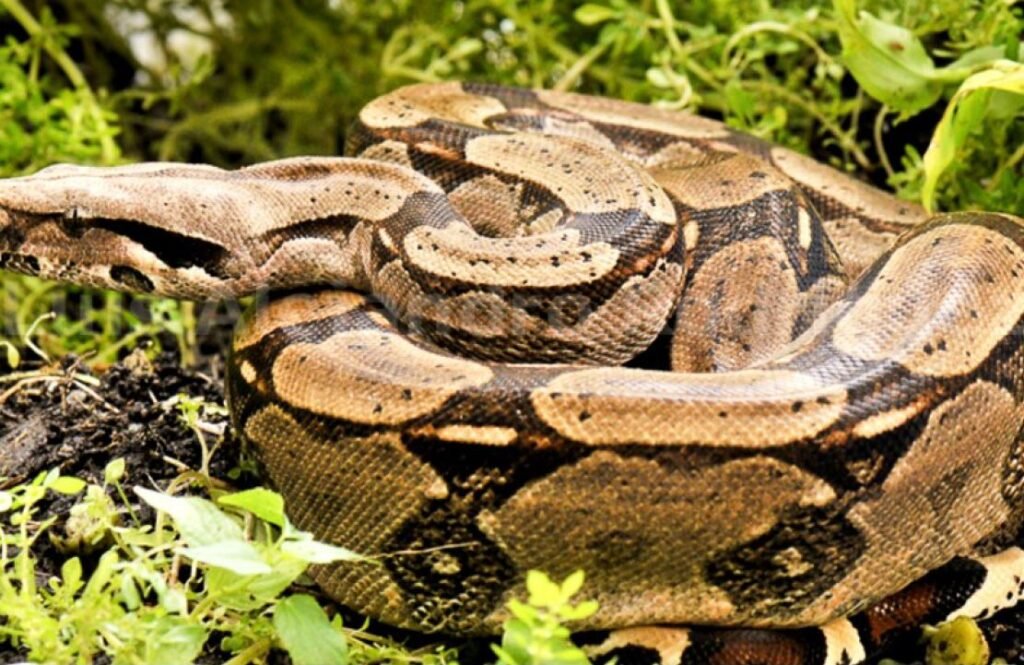The Tambopata region, in the Peruvian Amazon, is a fascinating destination for nature lovers. Its vast ecosystems, including tropical forests and flooded areas, are home to an astonishing diversity of wildlife. Among the most remarkable inhabitants of this area are the reptile species of Tambopata—an impressive variety that reflects the region’s rich biodiversity.
From colorful snakes to mysterious turtles and caimans, these reptiles are not only essential to ecological balance but also a wonder for explorers and biologists eager to uncover more about these fascinating creatures.
Why is Tambopata a Paradise for Reptiles?
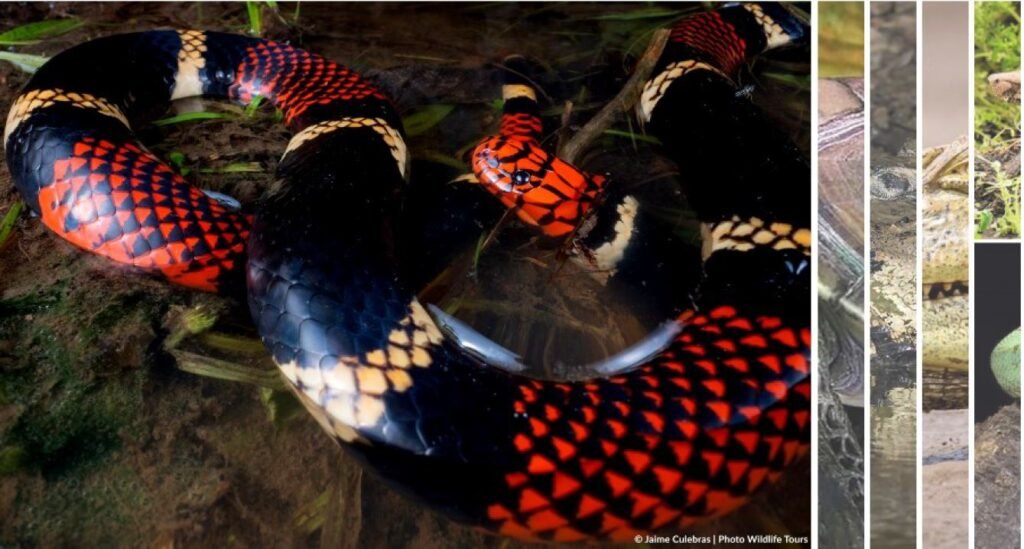
Tambopata, located in the Peruvian Amazon, is considered a true paradise for reptiles due to its unique biodiversity and diverse natural habitats. This remote corner of the planet harbors a wide range of reptile species that thrive in its tropical forests, rivers, and wetlands.
The region offers the perfect combination of temperature, humidity, and natural resources that attract reptiles of all kinds, from snakes and lizards to turtles and caimans. Its isolation and the protection provided by reserves like the Tambopata National Reserve have allowed these species to flourish, making it one of the most fascinating places in the world for wildlife observers and biologists.
Iconic Reptiles of Tambopata
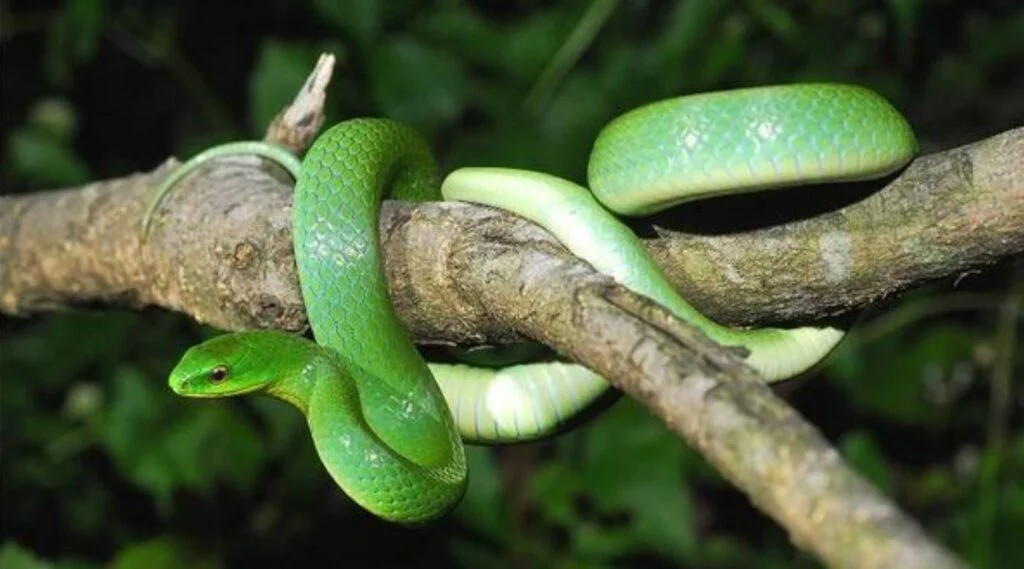
1. Green Anaconda (Eunectes murinus):
The largest snake in the world can be found in Tambopata’s rivers and lakes. Its imposing size and aquatic nature make it one of the most sought-after species by wildlife enthusiasts.
2. Boa Constrictor (Boa constrictor):
This snake is a skilled hunter that uses its strength to constrict its prey. In Tambopata, boas of different sizes and colors can be spotted.
3. Black Caiman (Melanosuchus niger):
The black caiman is one of the Amazon’s top predators. These giant reptiles inhabit the rivers and lakes of the reserve, feeding on fish, mammals, and birds.
4. Taricaya Turtle (Podocnemis expansa):
This river turtle is an endangered species. Every year, hundreds of females arrive on Tambopata’s beaches to nest.
5. Green Iguana (Iguana iguana):
These striking arboreal reptiles are common in Tambopata’s forests, feeding on leaves, flowers, and fruits.
How to Observe Reptiles in Tambopata
To observe reptile species in Tambopata in their natural habitat, it’s highly recommended to hire a specialized local guide. These guides are deeply familiar with the region’s ecosystems and the best spots to encounter these fascinating creatures. Additionally, they provide essential information to ensure a safe and respectful experience, enriching both the visitor and the natural environment.
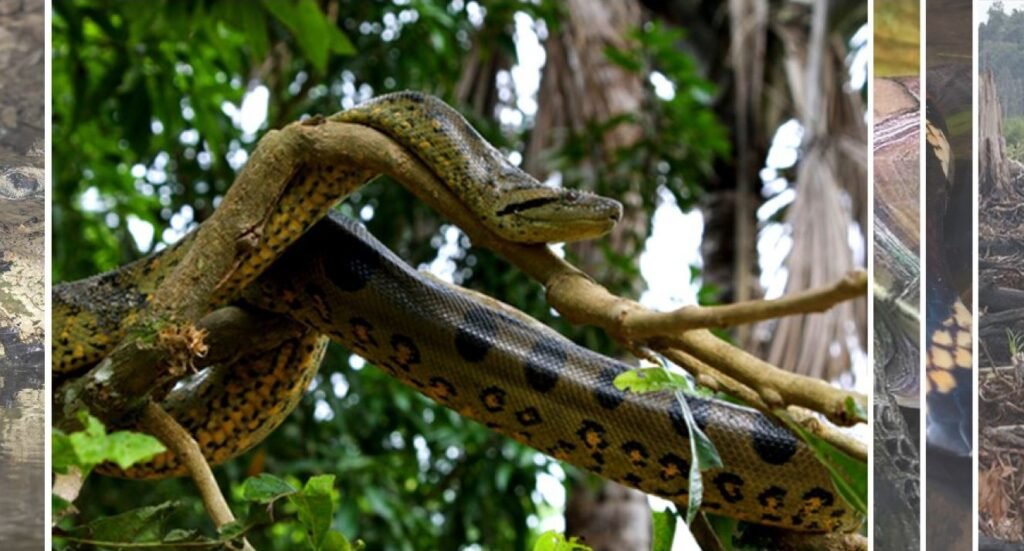
Tips for observing reptiles:
- Be patient: Reptiles are cold-blooded animals and tend to be more active during the warmest hours of the day.
- Stay silent: Loud noises can scare reptiles and cause them to hide.
- Respect their space: Avoid touching or disturbing the animals.
Frequently Asked Questions
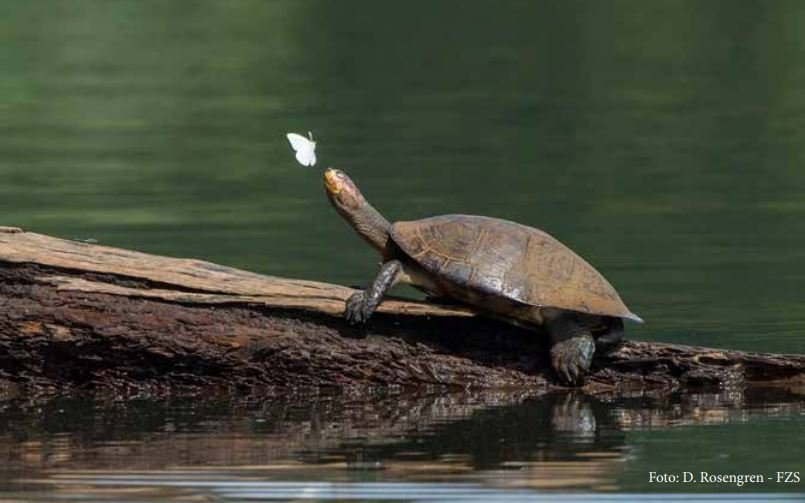
Are the reptiles in Tambopata dangerous?
While Tambopata is home to reptiles like anacondas and black caimans, most encounters with these animals are harmless if a safe distance is maintained and their space is respected. Attacks on humans are extremely rare and typically occur when the animals feel threatened.
What is the best time to see reptiles in Tambopata?
The dry season, from May to October, is usually the best time to observe reptiles in Tambopata. During these months, lower water levels make it easier to spot them in rivers and lakes.
What should I bring to observe reptiles?
- Rubber boots: For walking in wet areas and protection from potential snake bites.
- Insect repellent: To avoid bothersome mosquito bites.
- Binoculars: To observe reptiles from a safe distance.
- Camera: To capture special moments.
- Comfortable, light clothing: Preferably in neutral colors.
- Hat and sunscreen: For protection from the sun.
Where can I find tours to see reptiles in Tambopata?
Many travel agencies and lodges in Tambopata offer specialized tours for reptile observation. It’s recommended to research and compare options before making a decision.
What other reptile species can I find in Tambopata besides anacondas and caimans?
In addition to anacondas and caimans, Tambopata is home to a wide range of reptiles, such as:
- Green iguanas: Common in the region’s forests.
- Taricaya turtles: Nesting on the reserve’s beaches.
- Boa constrictors: Excellent climbers and hunters.
- Lizards and geckos: Abundant throughout the jungle.
How can I help conserve Tambopata’s reptiles?
- Avoid buying products made from animal parts: Don’t support illegal wildlife trade.
- Respect nature: Don’t litter or remove plants and animals from their natural habitat.
- Support conservation projects: Donate to organizations working to protect reptiles and their habitat.
- Spread awareness: Educate others about the importance of biodiversity conservation.
Can I touch the reptiles I find in Tambopata?
We do not recommend touching wild reptiles, as it can stress the animals and increase the risk of bites. Additionally, some reptiles may carry diseases.
Do I need a guide to visit Tambopata?
We highly recommend hiring a specialized local guide. A guide will help identify different reptile species, explain their behavior, and take you to the best observation spots.
Tambopata is an ideal destination for nature lovers and reptile enthusiasts. Its impressive reptile diversity and unparalleled natural beauty make this reserve a unique place in the world. Whether you want to observe snakes, lizards, or turtles in their natural habitat, Tambopata offers an unmatched experience. If you’re planning a trip to Peru, be sure to include this fascinating region in your itinerary to enjoy one of the richest biodiversity reserves on the planet.
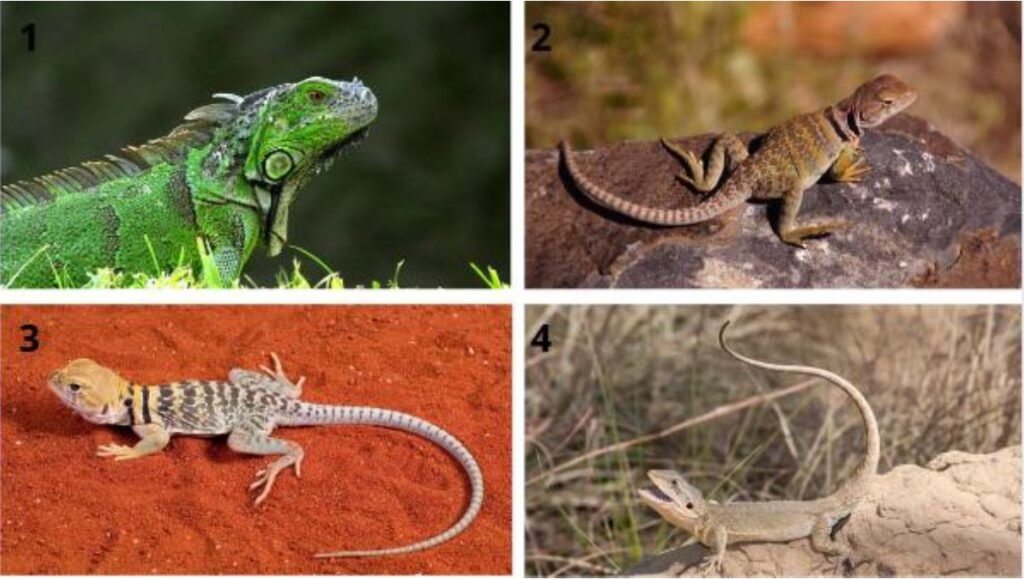
Ready to embark on this adventure? With Lorenzo Expeditions, you’ll explore Tambopata’s most remote corners and discover the incredible diversity of reptiles in this jungle. Book your tour now and prepare for an unforgettable experience!

